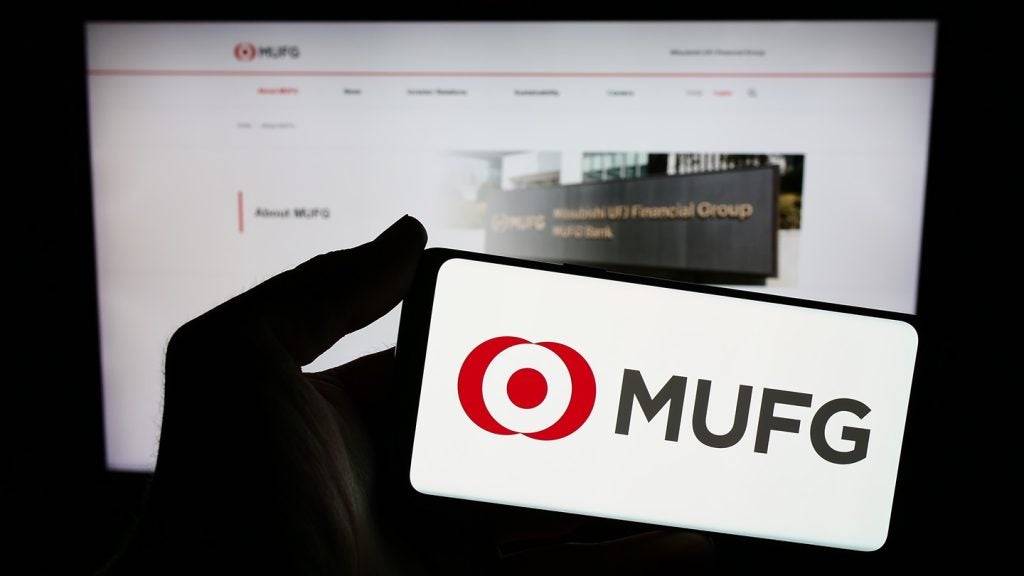problem of creating an effective and comprehensive service for the
‘nearly rich’. But these pools of mass affluent clients probably
represent the biggest single source of new, profitable customers
for the big universal banks, a new study* from VRL KnowledgeBank
suggests.
The segmentation of mass affluent clients differs widely among
various banks, but a typical definition is those in the bracket of
between $100,000 and $1 million of investable wealth.
Yet in practice, for most banks this is only a very rough rule of
thumb – perhaps inevitably in a complex real world where behaviour
and other variables are often more relevant. But whatever the
approach, today’s affluent customer – and retail banks are usually
well endowed with this resource – is tomorrow’s lucrative high net
worth (HNW) client. And, increasingly, the affluent client itself
is becoming a more important contributor to profit among the
successful practitioners.
In formulating mass affluent banking and advisory services, most
big retail banks have always encountered two major obstacles.
First is the incremental profitability of providing the financial
advice and investment products to meet the needs of such clients
does not appear attractive. While the affluent client generates
significant existing revenue from traditional commercial banking
products such as loans and deposits, adding competitive offerings
of investment products and personal financial advice involves
expenses and investments which cannot be covered by applying the
traditional investment advisory fee structure to the relatively
modest asset base of the affluent client.
In addition, there is significant evidence that many affluent
customers are unhappy with the existing level of service offered by
their retail bank.
How well do you really know your competitors?
Access the most comprehensive Company Profiles on the market, powered by GlobalData. Save hours of research. Gain competitive edge.

Thank you!
Your download email will arrive shortly
Not ready to buy yet? Download a free sample
We are confident about the unique quality of our Company Profiles. However, we want you to make the most beneficial decision for your business, so we offer a free sample that you can download by submitting the below form
By GlobalDataChange of strategy
A key initiative has been to move beyond the basic segmentation on
the basis of asset size to one which relates more to client needs,
potential client profitability and the bank’s business strategy.
Currently, most retail banks offer a ‘one-size-fits-all’ approach
to affluent clients, which is driven by the relatively large number
of clients – perhaps as many as 400 – per adviser, which makes it
extraordinarily difficult to offer the personalised service and
client knowledge demanded by affluent individuals.
By selecting priority segments such as entrepreneurs and
professionals, banks can offer both lower costs, through better
alignment of resources to market potential, and an improved level
of service.
The competition for the affluent segment from alternative financial
institutions such as fund managers, stockbrokers and independent
financial advisers is fierce. In the current talent war for
experienced advisers along with their client relationships, such
rivals can usually offer more attractive financial packages and a
less bureaucratic structure than retail banks.
However, retail banks are evolving their organisational structure
for the affluent segment. Two basic alternatives exist to minimise
the possible conflict over client responsibility:
• to locate the segment totally within the retail function;
or
• to place the primary responsibility for providing products and
advice with the wealth management unit, which includes the HNW and
other businesses.
Several leading US retail banks, for example, have recently shifted
to the latter structure in an effort to improve the level of
expertise offered the client.
Critical role
But this raises another challenge – attracting and retaining
superior talent in the critical role of relationship manager. Given
the difficulty in matching the financial packages offered by
non-bank competitors, banks are training up a broader range of
future managers using the team approach to client service, and
supporting the adviser with administrative and other assistance to
maximise the use of his time with clients.
Indeed, the power of a successful relationship manager is a major
weapon on servicing the mass affluent. A number of banks, having
successfully used the relationship concept to win share of wallet
from existing affluent clients, have decided to extend the concept
to other businesses such as the SME segment.
A comprehensive survey by Citigroup Smith Barney reflects the
substantial disparities across national markets in the importance
of commercial banks in winning the investment business of their
retail clients.
KBC tops ranking
The importance of savings and investment products is indicated by
the accompanying data, based on interviews with some 30,000 such
clients of 34 major retail banks, banks in the Benelux region,
Scandinavia and France. The top-ranked bank among the sample was
KBC, the Belgian banking conglomerate.
As one of Europe’s leading bancassurers, in its home market KBC
manages the retail banking and insurance businesses in an
integrated fashion with the bank branch network and independent
agents marketing both banking and insurance products. A strategic
goal is to maximise the contribution of bancassurance clients who
buy a number of both banking and insurance products, and
significant incentives are offered for cross-selling these
products.
KBC’s affluent programme is built around what it refers to as the
VIP service, which is focused on personal financial advice and
which is offered to clients with disposable assets of between
€250,000 ($356,000) and €1 million. Above this is the private
banking category.
The VIP service is embedded in the retail banking network, with a
designated relationship manager based in the relevant branch. The
relationship manager is backed by a specialist financial team in
the head office. Each relationship manager handles 100 to 150 VIP
clients, and other banking staff handle normal banking
transactions.
The financial advisory function of the VIP category is based on a
contract under which a financial plan is agreed based on the
client’s profile and needs, with a review of the plan and its
performance twice yearly as well as notification of new products,
timing of buy or sell recommendations and other financial
developments on an ad hoc basis.
For VIP clients who do not want such a contract, for which a
nominal annual fee of €250 is made, priority service in the branch
and other KBC services is still ensured via customer relationship
management screens. A relatively new product being successfully
offered VIP clients is advice on estate planning, which is notable
in the requirement for sensitive personal data to be made
available.
For VIP clients, the portfolio management process is highly
centralised, with relatively standard portfolios prepared centrally
in head office. Most portfolios are constructed from mutual funds
provided in-house by KBC Asset Management, one of the global
leaders in equity derivative-based funds.
The performance metrics for the VIP service are essentially driven
by branch performance. There is no overall profit and loss data for
the service, but each branch has its sales targets, client
satisfaction data based on external surveys, and evaluation of
individual relationship managers by the branch manager.
In terms of client segmentation, KBC uses a metric of four
categories from A to D to measure client attractiveness to the
bank, with A the highest. All VIPs fall into the A category, but
not all As are in the VIP class. A high priority in the VIP
category is given to entrepreneurs with growth potential.
Citigroup’s strategies
Among the big global banks, Citigroup has a well-developed
programme to meet the needs of the mass affluent. One of Citi’s
core wealth management strategies is to position the bank as the
premium wealth manager in the affluent market on a global scale,
which it defines roughly as clients with over $100,000 in
investable assets up to the $2 to 3 million level.
Its global affluent strategy is built around the Citigold concept,
which originated in 1984 and now operates in about 50 markets
around the world. Between the fourth quarter of 2004 and the first
quarter of 2006, the number of Citigold clients rose from 115,000
to 180,000.
Of all the wealth management segments, Citi regards the affluent
component as one with potentially rich rewards as well as an
intellectual challenge. The strategic focus is on improving the
customer proposition globally while maintaining uniform delivery
standards.
The Citigold strategy is built around four key assumptions derived
from extensive market research:
• Growth on a global scale. The affluent market is
growing both in terms of number of clients and their wealth, at an
annual rate of 6 to 10 percent depending on the market, with
Asia-Pacific at the top of the growth table;
• A change in affluent customer needs. Whereas
wealth in the past has been largely inherited, today’s wealth is
largely earned, and the new owners want a sense of reward, not
entitlement. They are prepared to change providers and are highly
brand conscious. In markets such as Asia-Pacific, special Citigold
lounges and luxury gifts attract a more demanding yet
brand-conscious clientele. While wealthy, these clients demand
service and price concessions from their bank;
• International. The ideal Citigold client travels
extensively, has overseas residences, prefers to use low-cost
business class airlines and has a high degree of career mobility.
He thus makes good use of Citi’s global network and ability to move
money around efficiently; and
• Personalisation. This client segment demands
personal service as well as non-standard products, in contrast to
the typical retail bank for which one size is expected to fit all.
To meet these needs, Citigold client managers have up to 250
clients each and are supported by call-centre and investment
specialists. Clients can access Citigold facilities in the global
branch network as well as their relationship manager and
specialists via the call centre.
Performance in the Citigold system is measured by a number of
metrics, including the number of products sold, the size of
balances and the willingness to recommend it to family and friends.
There is a global profit and loss calculation for the Citigold
business, but more specific numbers are not made public. Deposit
balances are a major profit driver, and the profit per client can
reach ten times that for a mass-market customer, where the cost of
a full branch network must be covered.
Beyond the focus on the international affluent client, there is no
deliberate segmentation structure. Clients tend to be based in the
financial and other international businesses. In terms of products,
Citigold focuses on ‘hook’ products, such as the Ultra credit card,
to build the client relationship.
Pricing can be aggressive, especially the high-interest product, in
response to the demanding client base, and often the standard
pricing of foreign exchange and other transactions must be adjusted
to meet their demands.
The issue of hand-over to another relationship manager as the
customer’s wealth grows is not significant. The Citigold
relationship manager is central to the strategy, and the customer
can retain this personal relationship as his investment needs
evolve.
* This article is an edited extract from a new report from VRL
KnowledgeBank called Best Practice in Banking the Affluent. Written
by banking consultant Steve Davis, the report looks in
comprehensive detail at the global mass affluent, affluent and
wealth management markets and carries a number of case studies.
Contact Ozi Ayewoh at ozi.ayewoh@vrlknowledgebank.com
for more information








